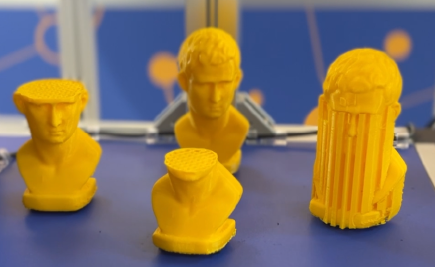Have you ever thought about getting up and close to those ancient artifacts full of stories? However, because these artifacts are extremely rare and fragile, we both want to showcase them but worry about the potential damage. Fortunately, technology helps us preserve and record the three-dimensional shapes and surface textures of artifacts and even create many replicas. These replicas further promote the value of these artifacts in various fields such as research, education, and creative industries. If it were you, how would you like to use ancient artifacts and new technology?
Reality → Virtual3D Scanner
A 3D scanner is like a powerful camera. It scans objects using light and records the shape and appearance of the object based on the reflected light. Then, these recorded data points form a 3D model on the computer.
Virtual → Reality3D Printing
Similar to playing with sand at the beach, 3D printing technology starts from the bottom and builds up layer by layer to create a sandcastle. The material of this "sandcastle" could be plastic, metal, or ceramics. The computer calculates the position of each layer to be printed based on the 3D model design, ultimately stacking up into a three-dimensional product.
